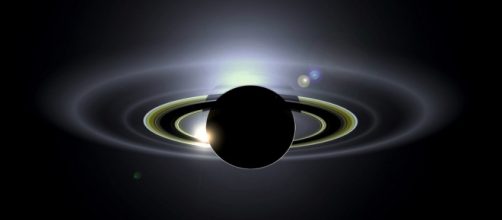Researchers have been interested in Saturn’s moon Titan for a long time and have searched the celestial body for trace materials and chemical precursors of life. After decade’s worth of investigation, NASA researchers have finally found the evidence that they had been looking for, namely a chemical substance called acrylonitrile, the Sacramento Bee reported. This substance is also found on Earth and is more commonly known as vinyl cyanide.
Researchers believe that this discovery can be seen as one more indication that Titan could be capable of supporting life.
However, these living organisms would be quite different from the ones found on Earth. Previous investigations had also hinted at the presence of the Chemical Compound on Saturn’s moon, but scientists were unable to come up with conclusive proof of the material. However, now the acrylonitrile has been confirmed to be present in the moon’s stratosphere.
What is the significance of the vinyl cyanide?
The question is what the importance of this particular chemical compound? Researchers have run computer simulations to determine that the vinyl cyanide, under the immense pressure on Titan, may be able to form a shell or membrane outside the liquid hydrocarbon cells present in the seas across Titan’s surface.
This indicates that life could start or may have formed on the moon even though such life forms would be quite different from any organisms on Earth.
How the discovery was made?
Researchers searched various data collected from the moon by the Cassini Spacecraft hovering around Saturn, which did indicate the presence of the acrylonitrile but could not provide any evidence of it. For the current research, NASA astronomers used the data collected by the Atacama Large Millimeter/Submillimeter Array or ALMA in 2014. This ALMA features a set of radio telescopes, which are housed in northern Chile.
The data not only revealed that the vinyl cyanide chemical compound is present in Titan but also indicated the amount of the substance which is likely present.
Space.com cite the study as saying that there are "liquid-hydrocarbon seas that dot the frigid moon's surface." The scientists say that perhaps as much as 10 million membranes could be present in these seas per cubic centimeter of the liquid. On Earth only 1 million organisms are found in one cubic centimeter of coastal sea water.
However, the organisms that can survive on Titan would need to be able to endure low temperatures and high pressures, which are prevalent on the moon. This discovery has also helped researchers to determine what the other materials may be on the surface of the moon. While life may not be present on Titan at present, it may be formed some day in the future.


